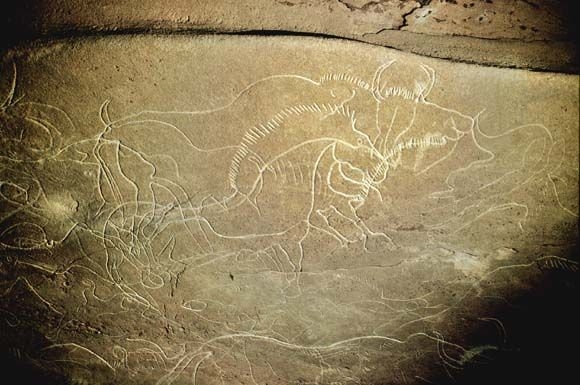Cussac cave
Discovered on 30 September 2000 by Marc Delluc in the Dordogne valley, the Cussac cave contains hundreds of palaeolithic engravings and human remains dating back more than 29,000 years. It is considered to be an engraved equivalent of the Lascaux cave ‒ France’s most famous decorated cave.

Work to secure and protect the entrance to the cavity was begun in early 2001. This made it possible to begin exploring and studying the cave.
Current research
Since 2009, the team led by Jacques Jaubert has studied the site as part of a multidisciplinary combined research project supported and funded by the Ministry of Culture.
The bestiary of the Cussac cave
This exceptional cave is decorated with hundreds of complete or partial figures. They include the traditional bestiary of the palaeolithic world, including mammoths, rhinoceroses, cervids, and a large number of bison and horses. More originally, there are also depictions of birds and strange animals with elongated muzzles and open mouths which are yet to be identified.
The cave was listed as a historical monument on 23 November 2000.
Useful links

